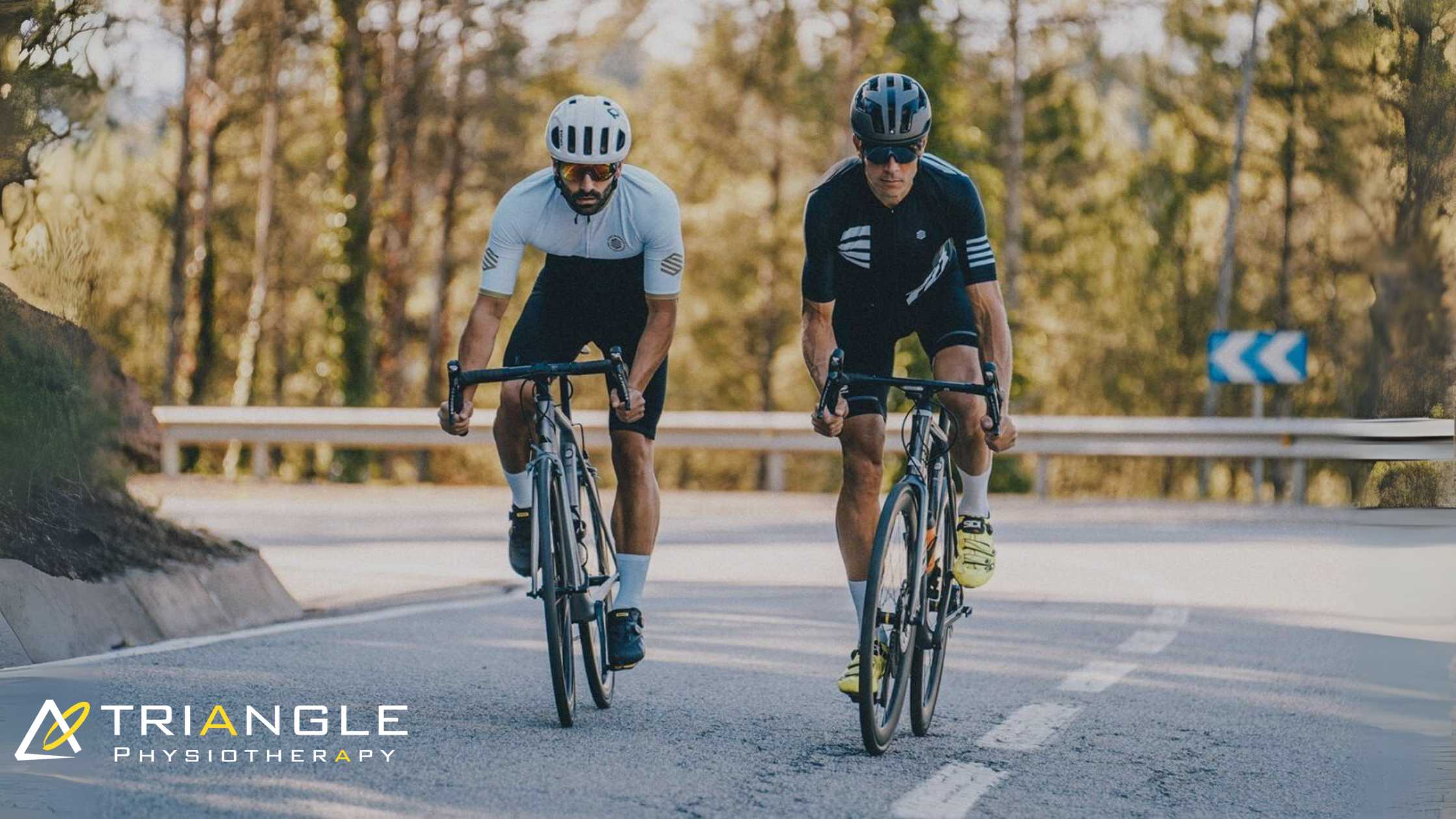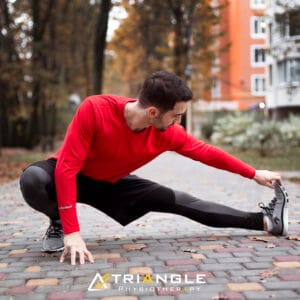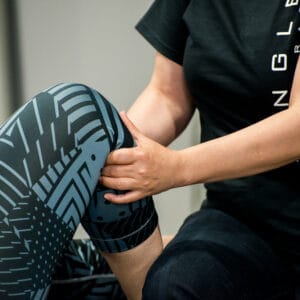Recovering from post-cycling tiredness is essential to optimize your performance and prevent injuries. There are some exercises and stretches to help you rejuvenate and relieve tired muscles after cycling. Before we talk about these exercises in detail let us discuss what is post cycling tiredness.
What is post cycling tiredness
Post-cycling tiredness, also known as post-ride fatigue or post-exercise fatigue, refers to the feeling of tiredness, lethargy, and muscle soreness that cyclists may experience after completing a cycling workout or ride. It is a common phenomenon that occurs as a result of the physical and physiological demands placed on the body during cycling exercise.
Several factors contribute to post-cycling tiredness:
- Muscle Fatigue: Cycling engages multiple muscle groups, including the quadriceps, hamstrings, calves, glutes, and core muscles. The repetitive pedalling motion and varying terrain can lead to muscle fatigue and soreness, especially during longer or more intense rides.
- Depletion of Energy Stores: Cycling is an endurance activity that requires sustained energy expenditure. As cyclists pedal, they utilize glycogen stores in the muscles and liver for fuel. After a ride, glycogen stores may become depleted, leading to feelings of fatigue and exhaustion.
- Fluid and Electrolyte Loss: Sweating is a natural response to exercise, and cyclists can lose significant amounts of fluid and electrolytes during rides, particularly in hot or humid conditions. Dehydration and electrolyte imbalances can contribute to feelings of fatigue and weakness post-ride.
- Muscle Damage and Inflammation: Cycling, especially over challenging terrain or at high intensities, can cause micro-tears in muscle fibres and induce inflammation in the muscles. This process, known as muscle damage, is a natural part of the muscle repair and adaptation process but can also contribute to feelings of soreness and exhaustion.
- Central Nervous System Fatigue: Prolonged or intense cycling efforts can also lead to fatigue at the central nervous system level. The brain and central nervous system play a crucial role in regulating muscle contractions, coordination, and mental focus during exercise. Fatigue at the central nervous system level can manifest as mental fatigue, decreased motivation, and impaired coordination post-ride.
Overall, post-cycling tiredness is a normal physiological response to the demands of cycling exercise. While it can be uncomfortable, it is typically temporary and can be managed with adequate rest, hydration, nutrition, and recovery strategies. Proper post-ride recovery practices and exercises including stretching, foam rolling, hydration, nutrition, and rest, can help cyclists minimize post-cycling tiredness and optimize their recovery for future rides.
Exercises and stretches to help you relieve tired muscles after cycling
Foam Rolling:
- Use a foam roller to massage tight muscles and release tension accumulated during cycling. Focus on areas such as the quadriceps, hamstrings, calves, and glutes.Roll slowly over each muscle group, pausing on any tender spots or trigger points to apply gentle pressure and encourage relaxation.
Static Stretches:
- Perform static stretches to improve flexibility and relieve muscle tightness. Hold each stretch for 20-30 seconds and repeat 2-3 times on each side.
Quadriceps Stretch:
- Stand tall and bring one heel towards your glutes, grabbing the ankle with your hand and gently pulling it towards your buttocks.
Hamstring Stretch:
- Sit on the floor with one leg extended and the other bent. Lean forward from the hips, reaching towards your toes while keeping your back straight.
Calf Stretch:
- Stand facing a wall with one foot forward and the other foot back. Lean forward, keeping the back heel on the ground, until you feel a stretch in the calf of the back leg.
Hip Flexor Stretch:
- Kneel on one knee with the other foot forward, and gently push your hips forward until you feel a stretch in the front of the hip.
Leg Elevation:
- Lie on your back with your legs extended against a wall or elevated surface. Relax your muscles and allow gravity to assist in draining fluid build-up from your legs, reducing swelling and fatigue. Elevating your legs helps improve circulation and promotes faster recovery by reducing muscle soreness and fatigue.
Low-Intensity Cardio:
- Engage in low-intensity cardiovascular activities such as walking, swimming, or gentle cycling to promote blood flow and flush out metabolic waste products from your muscles.
- Keep the intensity low to allow your body to recover without adding additional stress to fatigued muscles.
Deep Breathing and Relaxation:
- Practice deep breathing exercises and relaxation techniques to promote mental and physical relaxation. Find a quiet space, close your eyes, and focus on slow, deep breaths to reduce stress and tension in your body.
- Incorporate mindfulness or meditation practices to help calm your mind and promote overall relaxation and well-being.
Hydration and Nutrition:
- Drink plenty of water to stay hydrated and replenish fluids lost during exercise. Consume a balanced meal or snack containing carbohydrates and protein to refuel your muscles and support recovery.
Foods rich in antioxidants, such as fruits, vegetables, and nuts, can help reduce inflammation and promote recovery from exercise-induced oxidative stress.
Incorporate these exercises and recovery strategies into your post-cycling routine to help alleviate tiredness, promote muscle recovery, and restore your body’s balance and energy levels. Consider integrating Physiotherapy in Oakville as part of your recovery plan to further enhance these benefits. Listen to your body, and adjust the intensity and duration of your recovery activities based on your individual needs and preferences. Happy Cycling!
Frequently Asked Questions
- What is post-cycling tiredness?
- Post-cycling tiredness refers to the fatigue, lethargy, and muscle soreness experienced after a cycling workout, resulting from the physical and physiological demands of cycling.
- What causes post-cycling tiredness?
- Factors include muscle fatigue, depletion of energy stores, fluid and electrolyte loss, muscle damage and inflammation, and central nervous system fatigue.
- Why is foam rolling recommended after cycling?
- Foam rolling helps massage tight muscles, release tension, and improve recovery by focusing on areas like the quadriceps, hamstrings, calves, and glutes.
- How do static stretches aid in recovery?
- Static stretches improve flexibility, relieve muscle tightness, and should be held for 20-30 seconds to effectively stretch the muscle.
- What’s the proper way to perform a quadriceps stretch?
- Stand tall, bring one heel towards your glutes, grab the ankle, and gently pull it towards your buttocks.
- How does a hamstring stretch work?
- Sit with one leg extended, the other bent, and lean forward from the hips towards your toes, keeping your back straight.
- What is the benefit of calf stretches?
- Calf stretches improve flexibility in the calf muscles, essential for cyclists to relieve tightness and promote recovery.
- Why is hip flexor stretching important?
- Hip flexor stretches help alleviate tightness in the front of the hip, common in cyclists due to the cycling posture.
- How does leg elevation help in post-cycling recovery?
- Elevating legs aids in draining fluid buildup, reduces swelling and fatigue, and improves circulation for faster recovery.
- What role does hydration and nutrition play in recovery?
- Staying hydrated and consuming a balanced meal or snack post-ride replenishes fluids, refuels muscles, and supports overall recovery.
Recovering from cycling fatigue can be enhanced with the right post-cycling exercises and guidance. For personalized support, consider physiotherapy in Etobicoke, Oakville, North York, Toronto, Lawrence Park, Queens Quay, Erin Mills, Mississauga, or Liberty Village. Expert physiotherapists in these locations can provide tailored recovery plans to help you stay active and reduce tiredness effectively.




